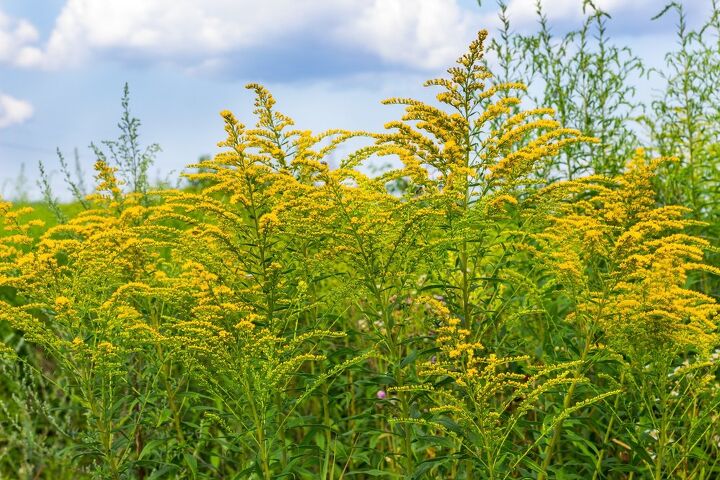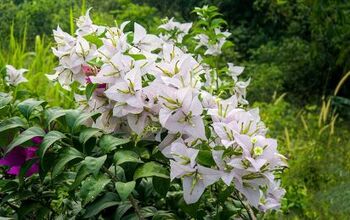Common Plants That Can Cause Allergic Reactions

Plants bring a lot of joy to the lives of homeowners. They add beautiful colors, alluring smells, and even much-needed oxygen to the air. These are just a few reasons to have plants in your yard and your home. While there are so many benefits to plants, it is important to remember that some plants can be harmful and toxic. Some plants can even cause severe allergic reactions if you come in contact with them.
Poison ivy, poison oak, and poison sumac are three plants that contain urushiol, which can cause severe and painful allergic reactions if they come in contact with your skin. Other plants, including cacti, stinging nettle, ragweed, and leadwort can also cause irritating reactions. Top ways to avoid these painful reactions include wearing protective clothing, and knowing how to properly identify these potentially dangerous plants.
Most plants you will find in your yard, and even in nature, will cause little to no negative reaction when you come in contact with them. Unfortunately, the few common plants that can cause reactions tend to cause severe and highly irritating reactions. Keep reading to learn more about these potentially harmful plants, and what you can do to help prevent ever having a bad encounter with any of these pesky flora.
10 Common Plants That Can Cause Allergic Reactions
1. Poison Ivy
When you think of plants that cause bad allergic reactions, there is a good chance the first plant you think of is poison ivy. Poison ivy exists in many wooded areas, popping up in late spring, and continuing to grow until the first frost.
If your skin comes into contact with the plant and its urushiol, you can be left with painful, itchy skin and even blisters that can itch and spread until properly treated. It’s important to always stick to cleared paths when walking in wooded areas where poison ivy is known to exist. This plant can also find its way into your yard, making it particularly important to be able to identify. Poison ivy grows as a vine or in a cluster, and appears as leaves of three, which has inspired the saying, “leaves of three, leave them be.”
2. Poison Oak
While some areas are known for poison ivy, others may have poison oak. Poison oak is not a tree, or even related to the oak family, but its leaves (which also come in sets of three) resemble oak leaves.
Poison oak contains the same harmful urushiol as poison ivy, and therefore causes equally unpleasant and downright painful rashes. Poison oak is always producing urushiol, which means that it can give you a painful allergic reaction any time of year, as long as it’s alive. Poison oak likes wooded areas, but also thrives in sandy and dry soils.
3. Poison Sumac
The third plant that contains the irritating and dangerous urushiol that can be found throughout North America is poison sumac. The main difference between poison sumac and the other two plants is that poison sumac grows as a shrub or even as a small tree, and it loves wet climates.
If you see this plant, carefully remove it and its root system to avoid future shrubs from appearing. Its size makes it easy to spot but also makes it much easier for you to to come into contact with it by mistake.
4. Cacti
Cacti may be low-maintenance houseplants, but some types of cacti you may find in the wild, or even planted in a yard, can cause severe allergic reactions. Some cacti have harmful fuzz or no thorns at all, but other species have many pointed and dangerous thorns.
These thorns can puncture your skin, and even cause infections. If you live somewhere with lots of cacti, make sure you always use thick gloves that cover and protect your skin, and use the right tools when cutting and transplanting these plants. If you ever get pricked, make sure you wash the wound thoroughly and apply antibiotic ointment to help prevent infection.
5. Stinging Nettle
Stinging nettle, and its close relative wood nettle, aren’t as pointy as cacti but can pack a punch that stings you just as painfully. This plant has long leaves with signature jagged edges, and the plant itself can grow upwards of eight feet high.
Stinging nettle has hairs on it that can cause a sharp stinging sensation that can turn into a rash and even hives that can last for a day or longer. This plant is sometimes cultivated for certain remedies that are said to help with joint pain (the stinging disappears when you cook the leaves), but unless you are using this plant for herbal medicine, it is a wise idea to get rid of it.
6. Leadwort
Some plants that cause an allergic reaction are a bit more deceptive than the prickly cacti and jagged leaves of stinging nettle. Leadwort has vibrant green leaves and beautiful blue flowers, making it a plant that might seem perfect to add a bit of color to your yard. Unfortunately, handling leadwort can be an ugly ordeal. Touching this plant can cause skin irritation, blisters, and hives. If you insist on keeping this plant, make sure you always wear gloves when handling it.
7. Ragweed
Another prevalent plant that can cause all sorts of negative allergic reactions is ragweed. This long grass-like weed is an invasive species you should never plant in your yard. It can cause rashes, hives, and lots of sneezing for those who are allergic to its pollen.
What makes this plant particularly harmful is that you don’t even need to touch it to feel its negative effects. The pollen can travel with the breeze, and cause hay fever and other seasonal allergies. There are few benefits to having ragweed around, so pulling it out and replacing it with a non-allergic type of ground cover is almost always a good idea.
Five Tips To Avoid Allergic Reactions From Common Plants
1. Remove The Plants From Your Yard
The best way to prevent allergic reactions from these common plants is to keep them as far away from you as possible. Kill poison ivy, oak, and sumac as soon as you spot it. If you have cacti, make sure they are in an area that no one walks too closely to (including your pets).
2. Cover Yourself When You Garden
You can’t always see these dangerous plants when you are in the thick of your garden. This is one of the many reasons it is so important to wear protective clothing and gardening gloves when you work in your garden. This adds a thick layer of protection between your skin and the harmful plant.
3. Know What These Dangerous Plants Look Like
Another key to preventing allergic reactions from these plants is to know what they look like. You are much more likely to touch poison ivy and get a rash if you don’t know how to identify the plant. Make sure you know what the potentially harmful plants in your area look like so you can remove and avoid them as needed.
4. Clean Garden Equipment After Use
Remember that some of the dangers of these plants can linger. The urushiol from poison ivy, oak, and sumac can transfer from your garden equipment to your skin. Always wash your gardening tools and clothing after they come in contact with allergy-causing plants.
5. Keep Your Yard Tidy And Free Of Weeds
Lastly, remember that a clean garden is a happy and safe garden. The more weeds grow in your garden, the more these dangerous plants have the chance to sprout up and go unnoticed. Weeding is important to keep your garden thriving, but also helps keep you safe from these plants that can cause allergic reactions.
Summing Up Common Plants The Cause Allergic Reactions
There are many benefits of having plants in your yard and home. They improve air quality, add bursts of life and color, and even sweet fragrances. There are, however, several plants that can cause more harm than good.
Plants like poison ivy, poison oak, and poison sumac all contain urushiol, which can cause a terrible and itchy skin rash if it touches your skin. Other plants like cacti, agave, stinging nettle, and ragweed all can cause adverse allergic reactions. It’s important to remove these plants from your yard and know how to spot them. When gardening, make sure you wear protective clothing and wash your gardening tools and clothing after each use.
Related Guides:

Tom Gaffey is an expert writer who currently resides in Washington D.C. Tom has a passion for real estate and home improvement writing, as well as travel and lifestyle writing. He lived the last twelve years in Hawaii where he worked closely with luxury resorts and event planners, mastering his knowledge of aesthetics and luxury products. This is where he found his passion for home improvement and a keen interest in DIY projects. Currently, Tom resides in Washington D.C, and also working on his debut fiction novel.
More by Tom Gaffey












![10 Best Scroll Saws for 2022 [Ultimate Reviews & Buyer's Guide]](https://cdn-fastly.upgradedhome.com/media/2023/07/31/9070684/10-best-scroll-saws-for-2022-ultimate-reviews-buyer-s-guide.jpg?size=350x220)
![The 10 Best Table Saws - [2022 Reviews & Buyer's Guide]](https://cdn-fastly.upgradedhome.com/media/2023/07/31/9070645/the-10-best-table-saws-2022-reviews-buyer-s-guide.jpg?size=350x220)













